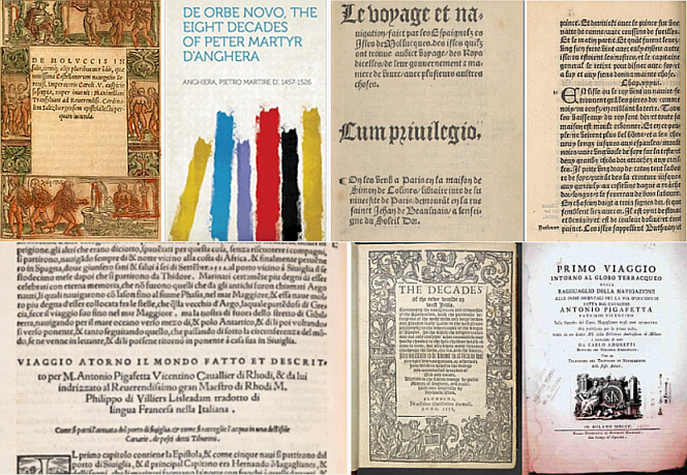The first 12 parts of this chronological review looked into how 15th century history writers told from a European viewpoint how the Portuguese explorer Ferdinand Magellan’s Expedition for the Spanish Crown stumbled on a cluster of islands in 1521 after crossing the Pacific Ocean westwards, found anchorage in an island called Mazaua, and there held the first Holy Mass that marked the birth of the Philippines as a Christian nation.


In the first 80 years after that landmark event, however, an unfortunate garbling of the authentic Mazaua narrative created a serious shroud of doubt about that island as the First Mass site on March 31, 1521.
The very first book in 15th century Europe with an account of that Magellanic sojourn was the 1523
“De Moluccas Insulis” in Latin by Maximilianus Transylvanus, courtier and personal secretary of the Roman Emperor and King Charles V of Spain. But Transylvanus, after a fleeting mention of “Mazzana” as anchorage, discarded Magellan’s entire seven-day sojourn and the First Mass officiated there. He then peremptorily moved the action to Cebu where Magellan attempted in only six days to both subjugate and Christianize the Cebu natives, infuriating them and leading to his brutal slaying by Lapulapu’s warriors in the Battle of Mactan.
All the other 15th century writers who translated, abridged, or adapted Pigafetta’s chronicles about where Magellan anchored and had the First Mass officiated—Giovanni Battista Ramusio, Peter Martyr d’Anghiera, Jacques Fabre, and much later Richard Eden—had apparently in good faith been misled that both events took place “in the island of Butuan.” It is tempting to assume they had inadequate translation skills or had an ulterior motive in making that serious historical error, but a simple but dispassionate reading of Pigafetta’s narrative and expository style will readily negate that assumption.
In the particular case of Pigafetta’s narrative of the departure of Magellan’s fleet from Homonhon Island on March 22, 1521, it took him over 3,000 words later (in their English translations) to identify “Mazzava” as the island where they had anchored, where the captain-general would induce many of the natives to become Christians, and where the First Mass was eventually officiated.
This oversight is much too long for even an average modern-day translator or editor to tolerate, so it is no surprise that the likes of Peter Martyr, Ramusio, and Eden had editorially decided during such a long stretch to already identify the most logical and geographically plausible place-name before it is even mentioned:
Peter Martyr’s abridgment in Latin as translated into English by Richard Eden: “The .xxv. day of Marche, they departed from hense and directed theyr course betwene the Weste and southwest, and sayled betwene foure Ilandes named Cenalo, Huinanghan, Hibusson, and Abarien,* &c…. The xxviii. daye of Marche, they came to the Ilande of Buthuan where they were honorably interteyned of the Kynge and the Prince his soonne …”
(Evidently wrong and garbled translations.)Pigafetta’s French original as translated into English by James Alexander Robertson: “That same day we shaped our course toward the west southwest between four small islands, namely, Cenalo, Hiunanghan, Ibusson, and Abarien...Thursday, the 28th of March, having seen the night before fire upon an island, at the morning we came to anchor at this island... It lies in a latitude of nine and two-thirds degrees toward the Arctic Pole, and in a longitude of one hundred and sixty-two degrees from the line of demarcation. It is twenty-five from the Acquada, and is called Mazaua.
(Verifiably correct translation.)One decisive geographical fact all of the 15th century historians agreed on: Mazaua, along with Butuan, was located in the Mindanao landmass and was not some imaginary island later to be extrapolated by two 17th century missionary Jesuit priests as either Dimasawa or Limasawa.
(In Part 14, we will look into this very serious and much more unseemly departure from the well-established facts of the Mazaua anchorage and the First Mass officiated in that island.)
(Next:
Getting our history right after 500 years – Part 14) July 1,2021
This essay, 2,051st of the series, appeared in the column “English Plain and Simple” by Jose A. Carillo in the Campus Press section of the June 24, 2021 Internet edition of The Manila Times
,© 2021 by the Manila Times Publishing Corp. All rights reserved. Read this article online in
The Manila Times:
“Getting our Philippine history right after 500 years - 13”To listen to the audio version of this article, click the encircled double triangle logo in its online posting in
The Manila Times.